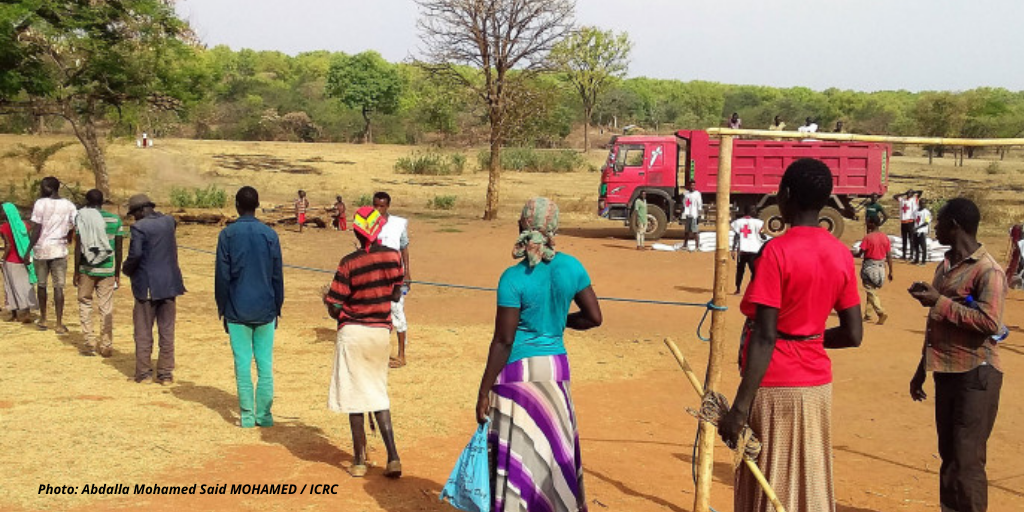News: Some 15.1 m people in Ethiopia in need of humanitarian assistance; recent flooding affect 500,000 people; UN seeks US$ 1.44 b
by addisstandard
Addis Abeba, September 08/2020 – In 2020, Ethiopia’s humanitarian needs have increased due to the impacts of COVID-19 and other health outbreaks such as cholera, the persisting desert locust invasion (since June 2019) impacting livelihoods and exacerbating food insecurity, and recent conflict and flood-induced displacements in parts of the country. These needs have deepened existing/protracted vulnerabilities.
Despite the increasing needs, the mid-year review (MYR) of the joint Government and humanitarian partners’ 2020 Ethiopia Humanitarian Response Plan (HRP), which was officially released on 1 September2020, is significantly underfunded.
The plan targets 15.1million people with emergency food and non-food assistance at a cost of US$1.44 billion (61 per cent children, 21 per cent women and 9per cent disabled).
At present, the HRP is at its lowest funding level of at least a decade, with a gap of $904.9 million. Looking at the sector breakdown, only 49 per cent of the emergency food needs are met. The longer affected population remain without food assistance to meet their nutritional needs, the higher the likelihood of them drifting into malnutrition, particularly children under-5 and pregnant and breastfeeding mothers. The Agriculture Cluster is 8 per cent funded, Education Cluster 7 per cent funded, ES/NFI Cluster 5 per cent funded, Health Cluster 11 per cent funded, Logistics Cluster 16 per cent funded, Nutrition Cluster 26 per cent funded, Protection Cluster 7 per cent funded and WaSH Cluster 14 per cent funded.
Without urgent additional funding, multi-sector vulnerabilities will further deepen, mostly impacting women, children, the elderly, the disabled, and people in sites and site-like settings amongst others.
On the day of the official release of the HRP, the United Nations Resident and Humanitarian Coordinator for Ethiopia, Dr. Catherine Sozi, stressed that “today, more than ever, the Government and people of Ethiopia need the steadfast support from international partners. The country needs urgent additional financing to not only control the various co-pandemics before they further spread across the country, but to also mitigate the adverse long-term impact on the already dire humanitarian context.” Dr. Sozi called on friends and partners of Ethiopia to avail additional funding to address these needs, prevent human suffering and avoid deaths. According to the NDRMC Deputy Commissioner, Ato Damene Darota, “COVID-19 is the immediate focus of the Government of Ethiopia. However, we will not lose sight of the multi-faceted and simultaneous humanitarian challenges across the country.”
UN’s Central Emergency Response Fund allocates US$8 million to Ethiopia
The United Nations Central Emergency Response Fund (CERF) allocated $8 million to urgently assist people affected by cholera outbreak and flooding in Afar, Oromia, Somali and SNNP regions. The fund will go to UNICEF and WHO to respond to water, sanitation and hygiene (WaSH) and health needs, respectively. This CERF allocation will benefit communities in six woredas of Afar region, 16 woredas in Oromia region, five woredas in Somali region and nine woredas in SNNP region. Between late June and 15 August, some 3,826 cases of cholera and 104 deaths were reported in six woredas of West Omo zone, while 128 cases and nine deaths were reported in Melka Soda woreda of West Guji zone, Oromia region. Close to half a million people affected by flooding due to heavy rains.
Meanwhile, heavy summer season (June –September) rains continue to cause flooding in many parts of the country. Some 500,000 people were so far affected, including some 300,000 displaced. Most recently, on 1 September, Awash River broke its embankment and flooded downstream areas in Amibara and Awash Fentale woredas of Afar region. The Government deployed a military helicopter (on 2 September) to evacuate flood-affected people and is also planning to deploy a team to assist the flood response operation in the region. According to The National Disaster Risk Management Commission (NDRMC), Koka and Kesem dams are releasing significant amount of water, pausing flood risk in downstream communities. NDRMC,in collaboration with Oromia and Afar regions, is working to evacuate people who live in high-risk areas and called for additional support, including COVID-19 risk communication messages in displacement sites.
Similarly, at least 20,000 flood-affected people were evacuated in Haro Hadi Town (since 1 September) as heavy summer rains continue to cause flooding in East Shewa zone in southern Ethiopia. The people were left stranded by flood water in Haro Hadi Town following the overflow of Awash River and Lake Bekele. An additional 25,000 people in Metehara Town (a quarter of the town’s population) are also at risk of displacement.
The National Disaster Risk Management Commission has deployed a team to the area to support the effort, while the Ministry of Defense deployed a helicopter for the endeavor. The relocated/displaced people are sheltered in schools and in inadequate tents without proper physical distancing or other protective measures in place against COVID-19. Local authorities have called on partners to urgently intervene with any available assistance. The full document is available here.